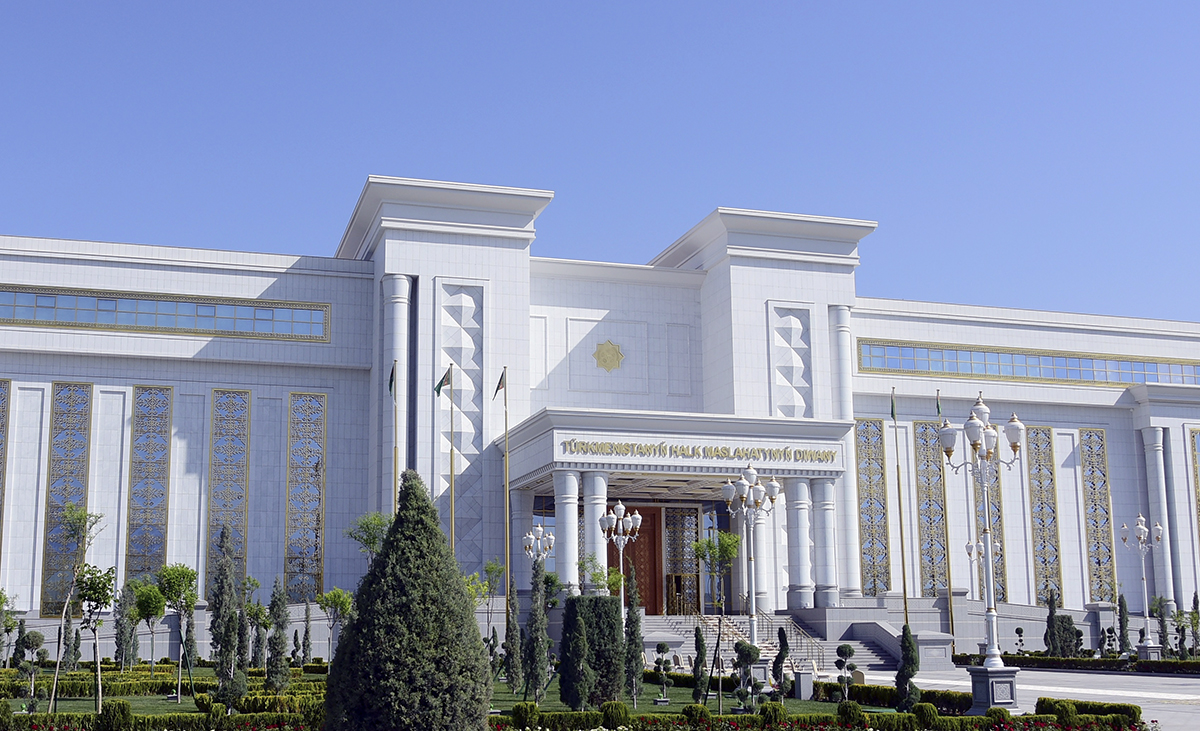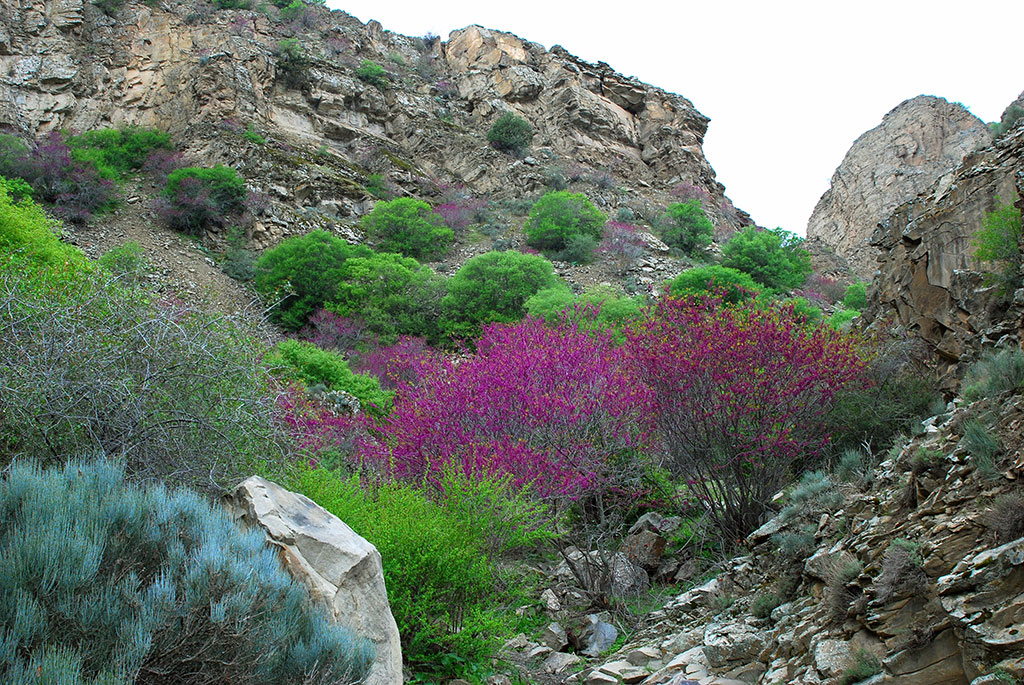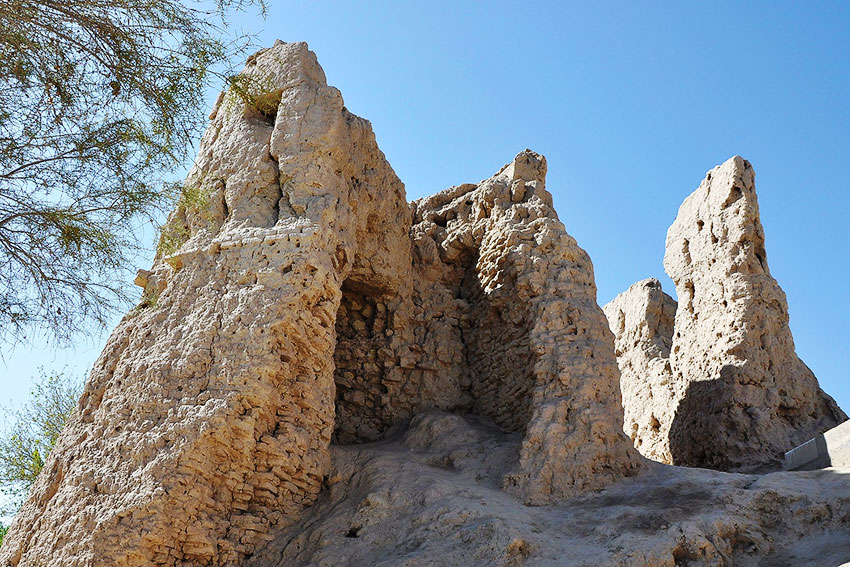The unprecedented horse marathon marking the V Asian Indoor and Martial Arts Games continues its 500-day tour in the ancient land in the east of Turkmenistan, in Lebap Velayat.
Lebap Velayat is the land with the footprints of dinosaurs and majestic karst caves, the most beautiful gorges, waterfalls and amazing moonscapes. The Amudarya River that is known for a great number of names flows there. The ancient Aryans called it the Vakshu, the Arabs – the Jeihun (impetuous), the Romans – the Oxus, the Greeks – the Araxes. Some scientists refer the name of the Amudarya River to the word Amu (Amin) – the king-river.
Caravan routes converged there in ancient times; traders crowded and filled the caravanserais and bazaars in the flourishing cities with many voices in different languages. Today, Lebap Velayat has become a large industrial centre with the tremendous economic potential. Due to its advantageous location on the routes of the international transit and transport corridors, Lebap Velayat serves as an important transport hub connecting independent neutral Turkmenistan with other countries.

Like many regions of Turkmenistan, the territory of Lebap Velayat is surrounded by the veil of antiquity and mystery. The earth mounds that served as the walls of ancient fortresses, the remains of old settlements, historical and architectural monuments associated with the names of the legendary warriors and the holy elders are generously scattered throughout the region. The great classic poet, humanist and patriot Seyitnazar Seidi lived and created his works there.
Scientists consider Hazarek Depe as one of the most marvellous and peculiar fortresses not only in Turkmenistan, but also in Central Asia. The large strong unapproachable fortress, built at the end of the 1st millennium BC, not only protected the small garrison but most likely it also served as the fire temple of the Avestians. This is evidenced by its unusual round shape, the internal layout and the archeological finding made from burnt clay with the solar circle in the centre. The high walls of another fortress - the Kelif keep the memory of Alexander the Great. Alexander the Great and his army crossed the furious Oxus – Jeihun there. The city of Amul, which was founded in the Middle Ages on the most convenient place to cross the river, turned into a big city in the middle reaches of the Amudarya River. The caravan routes from Khorasan run across the city eastward – to Mawarannahr and China, northward – to Khorezm and southward – to Balkh and India. The Daya-Hatyn caravanserai welcomed travellers and traders on their way from Amul to the capital of Khorezm along the Amudarya River.

The name of Astana Baba is well known to every citizen in Lebap Velayat. People say that he could turn the river back and the mausoleum appeared on the place when Astana Baba had died over the night. This huge and shining architectural monument, the most ancient part of which was built in the first half of the 12th century, and the whole building was erected in the 17th century, became a place of pilgrimage for many people from all the regions of Turkmenistan. The sanctity of the monument is associated with the fact that it was made from clay and water from Mecca! According to the legend, clay was brought by the order of the governor of Charvelayat (the medieval region of Khorasan) Hazret Nur Ogly (in other version Ubeida). His beautiful daughter Zubeida died soon after the wedding, and grief-stricken father decided to build a mausoleum in commemoration of his daughter. The best masters arrived from Merv and Samarkand to build the mausoleum. In spite of all their efforts, the mausoleum collapsed three times for unknown reasons. Ubeida fell into despair. One day, in his dream, he saw Astana Baba, who said that the mausoleum would stand the centuries if clay and water were brought from Mecca. The following morning, Ubeida sent a caravan to the holiest city. Clay from Mecca was mixed with local clay and water from Mecca was poured into the well. The mausoleum built from holy clay and water is over 5 centuries old.

The Turkmen classic poet Magtymguly studied in Idris Baba …
In any season of the year, the colourful palette of the Amudarya River nature enchants everyone travelling to the eastern region of Turkmenistan, where they can admire the rare species of animals and birds and enjoy the wonderful plants in the nature reserves.
The signs of the present day of Lebap Velayat are the giants of the oil refining and gas industries – the Seidi oil refinery and the Naip liquefied gas complex. The Turkmenistan-China transnational gas pipeline starts there - in the eastern region of our country. The Atamyrat-Ymamnazar-Akina section of Turkmenistan-Afghanistan-Tajikistan railway runs across the territory of Lebap Velayat. The large oil terminal was built at the Ymamnazar customs point.

The Garlyk ore-dressing and processing complex that will produce potash fertilizers, which is under construction on the largest potash deposit in Lebap Velayat, is the strategic facility of the national economy. The eastern region of our country has the profound potential to export Turkmen electricity, first to Afghanistan and to Pakistan and Tajikistan in the future. The Watan state power station was put into operation with in Beyik Turkmenbashi Etrap in July 2016. President Gurbanguly Berdimuhamedov attended the opening ceremony.
The standard of living in Lebap Velayat is steadily increasing. Within the framework of the National Programme for the improvement of social and living conditions in villages, settlements, towns in etraps and etrap centres, 206 social and cultural facilities, including 46 hospitals and healthcare institutions, 97 schools and kindergartens, 15 cultural centres, 48 sports schools and sports facilities, apartment houses with a total area of over 1,265 million square metres, were built in the region in 2008-2016. The Lebap Velayat citizens are proud of the Berkarar Zaman village in Zelili Gengeshlik in Garabekaul Etrap.
The increase of the economic potential of Lebap Velayat will bring this region of Turkmenistan to new heights of social and economic progress.

Lebap Velayat is the land with the footprints of dinosaurs and majestic karst caves, the most beautiful gorges, waterfalls and amazing moonscapes. The Amudarya River that is known for a great number of names flows there. The ancient Aryans called it the Vakshu, the Arabs – the Jeihun (impetuous), the Romans – the Oxus, the Greeks – the Araxes. Some scientists refer the name of the Amudarya River to the word Amu (Amin) – the king-river.
Caravan routes converged there in ancient times; traders crowded and filled the caravanserais and bazaars in the flourishing cities with many voices in different languages. Today, Lebap Velayat has become a large industrial centre with the tremendous economic potential. Due to its advantageous location on the routes of the international transit and transport corridors, Lebap Velayat serves as an important transport hub connecting independent neutral Turkmenistan with other countries.

Like many regions of Turkmenistan, the territory of Lebap Velayat is surrounded by the veil of antiquity and mystery. The earth mounds that served as the walls of ancient fortresses, the remains of old settlements, historical and architectural monuments associated with the names of the legendary warriors and the holy elders are generously scattered throughout the region. The great classic poet, humanist and patriot Seyitnazar Seidi lived and created his works there.
Scientists consider Hazarek Depe as one of the most marvellous and peculiar fortresses not only in Turkmenistan, but also in Central Asia. The large strong unapproachable fortress, built at the end of the 1st millennium BC, not only protected the small garrison but most likely it also served as the fire temple of the Avestians. This is evidenced by its unusual round shape, the internal layout and the archeological finding made from burnt clay with the solar circle in the centre. The high walls of another fortress - the Kelif keep the memory of Alexander the Great. Alexander the Great and his army crossed the furious Oxus – Jeihun there. The city of Amul, which was founded in the Middle Ages on the most convenient place to cross the river, turned into a big city in the middle reaches of the Amudarya River. The caravan routes from Khorasan run across the city eastward – to Mawarannahr and China, northward – to Khorezm and southward – to Balkh and India. The Daya-Hatyn caravanserai welcomed travellers and traders on their way from Amul to the capital of Khorezm along the Amudarya River.

The name of Astana Baba is well known to every citizen in Lebap Velayat. People say that he could turn the river back and the mausoleum appeared on the place when Astana Baba had died over the night. This huge and shining architectural monument, the most ancient part of which was built in the first half of the 12th century, and the whole building was erected in the 17th century, became a place of pilgrimage for many people from all the regions of Turkmenistan. The sanctity of the monument is associated with the fact that it was made from clay and water from Mecca! According to the legend, clay was brought by the order of the governor of Charvelayat (the medieval region of Khorasan) Hazret Nur Ogly (in other version Ubeida). His beautiful daughter Zubeida died soon after the wedding, and grief-stricken father decided to build a mausoleum in commemoration of his daughter. The best masters arrived from Merv and Samarkand to build the mausoleum. In spite of all their efforts, the mausoleum collapsed three times for unknown reasons. Ubeida fell into despair. One day, in his dream, he saw Astana Baba, who said that the mausoleum would stand the centuries if clay and water were brought from Mecca. The following morning, Ubeida sent a caravan to the holiest city. Clay from Mecca was mixed with local clay and water from Mecca was poured into the well. The mausoleum built from holy clay and water is over 5 centuries old.

The Turkmen classic poet Magtymguly studied in Idris Baba …
In any season of the year, the colourful palette of the Amudarya River nature enchants everyone travelling to the eastern region of Turkmenistan, where they can admire the rare species of animals and birds and enjoy the wonderful plants in the nature reserves.
The signs of the present day of Lebap Velayat are the giants of the oil refining and gas industries – the Seidi oil refinery and the Naip liquefied gas complex. The Turkmenistan-China transnational gas pipeline starts there - in the eastern region of our country. The Atamyrat-Ymamnazar-Akina section of Turkmenistan-Afghanistan-Tajikistan railway runs across the territory of Lebap Velayat. The large oil terminal was built at the Ymamnazar customs point.

The Garlyk ore-dressing and processing complex that will produce potash fertilizers, which is under construction on the largest potash deposit in Lebap Velayat, is the strategic facility of the national economy. The eastern region of our country has the profound potential to export Turkmen electricity, first to Afghanistan and to Pakistan and Tajikistan in the future. The Watan state power station was put into operation with in Beyik Turkmenbashi Etrap in July 2016. President Gurbanguly Berdimuhamedov attended the opening ceremony.
The standard of living in Lebap Velayat is steadily increasing. Within the framework of the National Programme for the improvement of social and living conditions in villages, settlements, towns in etraps and etrap centres, 206 social and cultural facilities, including 46 hospitals and healthcare institutions, 97 schools and kindergartens, 15 cultural centres, 48 sports schools and sports facilities, apartment houses with a total area of over 1,265 million square metres, were built in the region in 2008-2016. The Lebap Velayat citizens are proud of the Berkarar Zaman village in Zelili Gengeshlik in Garabekaul Etrap.
The increase of the economic potential of Lebap Velayat will bring this region of Turkmenistan to new heights of social and economic progress.







